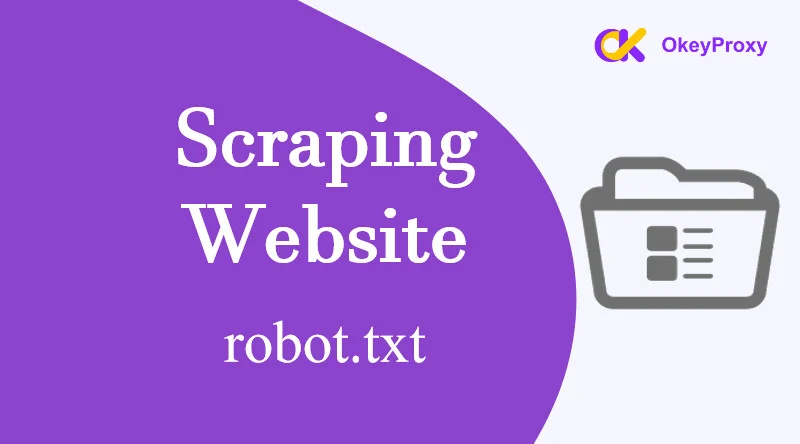
Web scraping has become an indispensable tool for data collection, providing valuable insights across various industries. However, ethical considerations are paramount when engaging in web scraping activities. One of the key elements in ethical web scraping is the robots.txt file. This article highlights the importance of robots.txt and how it guides ethical web scraping practices.
What is Robots.txt?
Robots.txt is a simple text file that resides in the root directory of a website. It serves as a set of instructions for web crawlers, indicating which parts of the website they are allowed or disallowed to access. This file is a crucial component of the Robots Exclusion Protocol (REP).
To evade detection and handle rate limits, change user agents frequently, employ proxies, and add pauses between requests to mimic human behavior and avoid being blocked.
OkeyProxy offers a robust proxy solution, featuring automatic rotation of premium residential IPs. With access to over 150M+ IPs from ISPs around the world, you can register today and enjoy a 1GB free proxy trial!
Why Robots.txt Matters in Web Scraping
-
Guidance for Web Crawlers: Robots.txt files provide clear guidelines for web crawlers, specifying which areas of a website can be crawled and indexed. This helps maintain the website's performance and protects sensitive content.
-
Ethical Responsibility: Adhering to the instructions in robots.txt files is an ethical responsibility for web scrapers. Respecting these guidelines demonstrates professionalism and respect for the website owner's preferences.
-
Legal Considerations: While robots.txt is not legally enforceable, ignoring it can lead to legal disputes. Website owners may seek legal action against scrapers who disregard their robots.txt instructions, especially if it causes harm to the website.
How to Implement Robots.txt in Web Scraping
-
Locate Robots.txt: Before initiating a web scraping project, locate the website's robots.txt file. This file is typically found at the root URL (e.g., www.example.com/robots.txt).
-
Analyze Disallow Directives: Pay attention to the disallow directives in the robots.txt file. These directives specify which parts of the website should not be accessed by crawlers. Respecting these directives is crucial for ethical web scraping.
-
Follow User-Agent Specific Rules: Some robots.txt files contain rules for specific user agents. Ensure that your web scraping tool identifies itself correctly and adheres to the rules specified for its user agent.
Best Practices for Ethical Web Scraping
-
Implement Rate Limiting: Avoid overwhelming the server with too many requests in a short period. Implement rate limiting to ensure a respectful and sustainable request rate.
-
Transparent User-Agent: Use a user-agent string that clearly identifies your bot and provides contact information. This transparency helps build trust with website owners.
-
Review Terms of Service: Always review and comply with the website's terms of service. Some websites explicitly prohibit web scraping, and violating these terms can lead to legal repercussions.
Conclusion
Ethical web scraping requires a thorough understanding of and adherence to robots.txt files. By respecting the guidelines outlined in robots.txt and following best practices, web scrapers can ensure their activities are responsible and respectful. This approach not only helps avoid legal issues but also fosters a positive relationship with website owners. Ethical web scraping is essential for sustainable data collection and maintaining the integrity of the web.
Related article:




评论 (0)